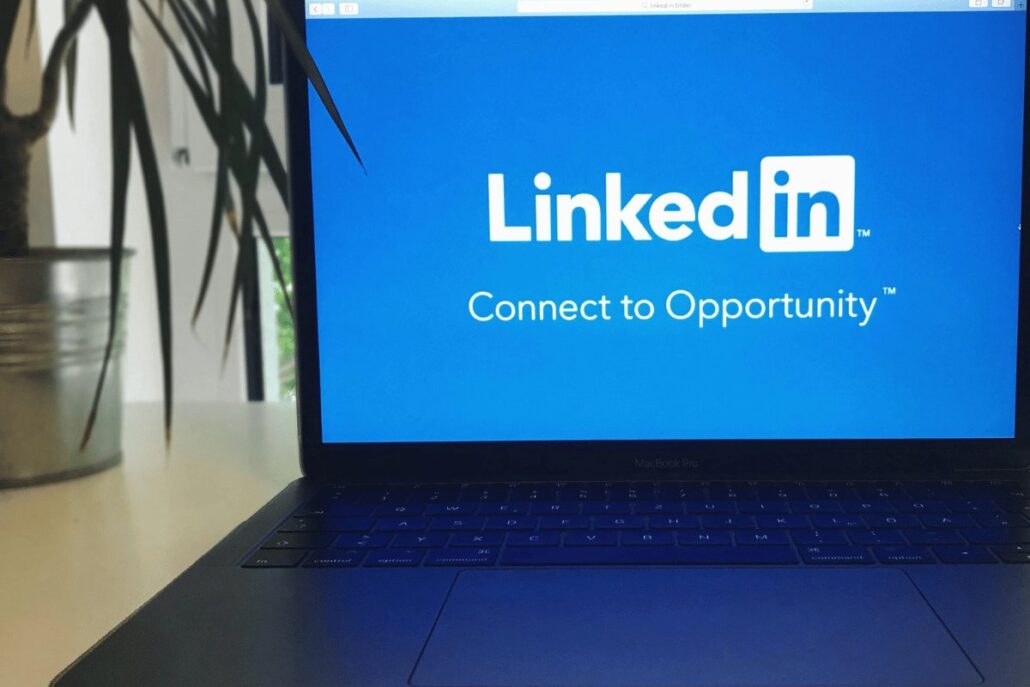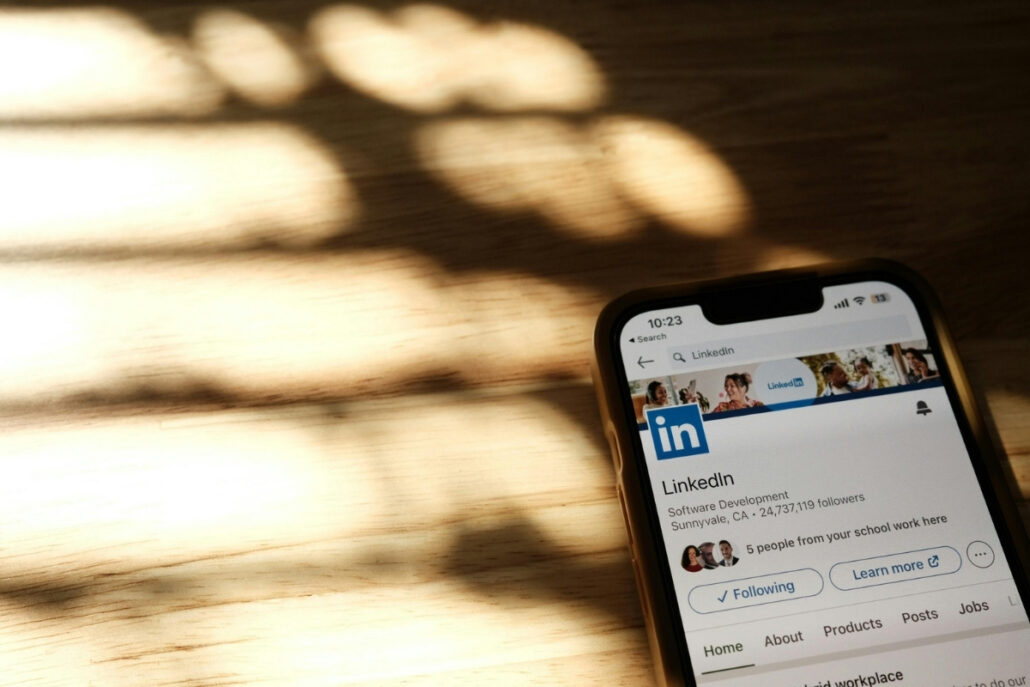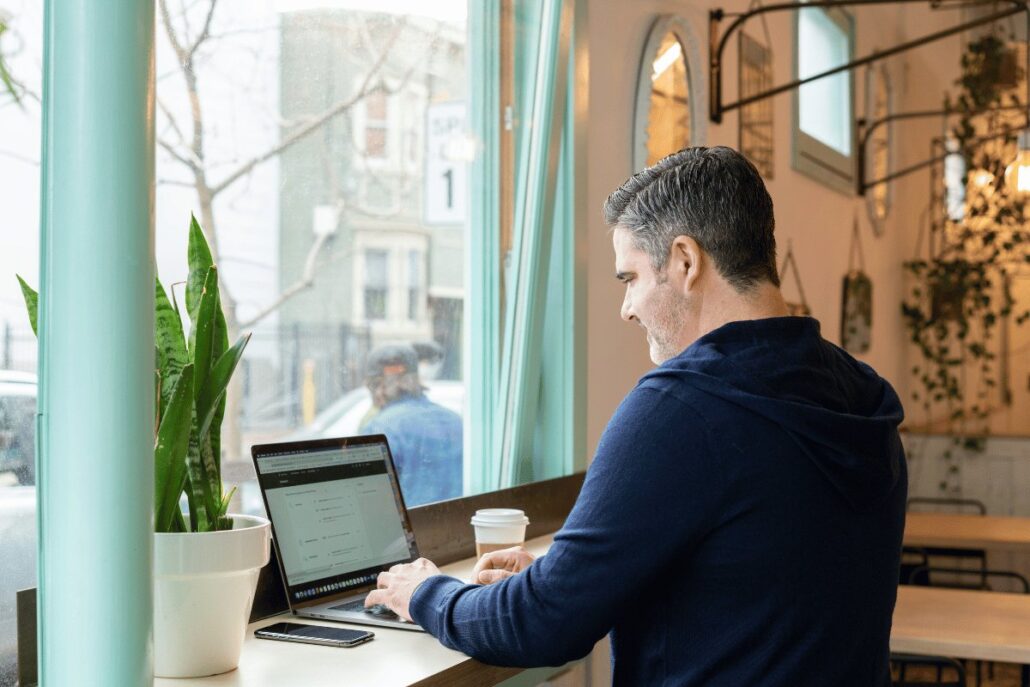LinkedIn Content Creation: Formats, Framework, and Tips
LinkedIn has evolved into a vital, professional platform used by many. It provides unique opportunities to establish authority and share content that can drive your business to success.
However, many users get confused about how to craft the right content for their profiles so that it will have high engagement and still be credible and authentic.
This guide provides actionable steps to mastering LinkedIn content creation and achieving a lasting impact.
Let’s get started.
TL; DR—How to Create Engaging Content on LinkedIn
In a rush?
Check out the top 4 steps to spark conversations, build trust, and expand your reach:
(More in-depth information throughout the blog.)
- Define your goals, understand your audience, plan diverse content, and experiment with different content types to effectively engage your audience.
- Tell stories while asking necessary questions, use visuals with authentic words, and keep it simple, focusing on a clear, single message.
- Engage actively with your audience, use relevant hashtags, and utilize your LinkedIn Ads and analytics to track your performance.
- Address common challenges like low engagement or content burnout with innovative solutions.
Need help getting started with your LinkedIn content?
At Crackerjack Marketing, we have 15+ years of experience creating engaging content for founders, experts, and corporate teams. We craft authentic and compelling posts in your voice, backed by strategy.
Let’s start a conversation about how we can create content that speaks to your audience and positions you as a thought leader.

What is LinkedIn Content Creation?
LinkedIn content creation involves crafting articles, media, or posts for your LinkedIn account that resonate professionally with your audience.
The type of LinkedIn content depends on your overall brand message and business goals.
Overall, you should:
- Create engaging LinkedIn content that shares valuable insights and brand-related news.
- Incorporate images, videos, and documents to increase engagement.
- Respond to messages, comments, and mentions, and actively engage in relevant discussions.
- Host LinkedIn events to engage your audience in real-time and build deeper connections.
- Use LinkedIn native analytics to track your impressions, reactions, comments, shares, and engagement rate.
- Include a clear call to action, guiding users toward the desired outcome, to increase conversion.

Importance of LinkedIn for Content Strategy
Now, let’s highlight the top reasons you should consider LinkedIn for your content strategy:
- Reach the Right Audience: LinkedIn has a vast professional network and precise targeting tools to help you deliver your message to the intended audience.
- Build Your Thought Leadership: You can build your reputation as an expert in your niche and connect with decision-makers in a space where they seek valuable professional insights.
- Build Genuine Connections: Use LinkedIn to create authentic connections with professionals, clients, and thought leaders in your field.
- Understand Your Audience: You can explore LinkedIn profiles, posts, and groups to learn more about your customers and industry trends.
- Diversify Your Approach: LinkedIn offers flexibility in sharing various content formats using free and paid tools to maximize reach.
- Increase Visibility: LinkedIn content can guide high-intent traffic to your website, services, and newsletters.
- Track Performance: Use analytics to evaluate your performance, test strategies, and continuously improve your content.

What Types of Content Perform Best on LinkedIn
The type of LinkedIn content you choose directly impacts the impressions and engagement you get.
We’ve explored the best content for LinkedIn that works right now based on the stats provided by Socialinsider:
Multi-Image Posts
Did you know the best-performing LinkedIn content is carousels, with an average engagement rate of 6.6%, and video posts have risen to 5.6%? Content such as images and infographics captures attention quickly.
Remember: Ensure your pictures are clear and consistent to simplify complex ideas.
In-Depth Articles
Native documents come second with an average engagement rate of 6.1%. Posts that provide value and actionable insights will likely be saved and shared.
So, write long-form content that explores market trends, ideas, or answers to typical problems. The aim is to provide value to your audience so they can learn something new. End with a call to action to spark engagement.
Polls and Questions
Polls have an average engagement rate of 4.4% and generate the most impressions. To promote participation, ask relevant and simple questions.
You can also reply to comments to encourage deeper discussions and gain a better understanding of your audience.
Text-Only Posts
The statistics further show that text-only posts average a 4% engagement rate. To create a powerful connection, share your experiences or career lessons. Emphasize the difficulties, results, and outcomes.
Being genuine humanizes you and makes your content more credible and relatable.

LinkedIn Content Creation Framework
To make the most of these LinkedIn post formats, you need a solid plan to create content that sparks interest and drives engagement.
Let’s look at the three steps for creating a content framework:
1. Start with a Hook to Grab Interest
Start with an intriguing statistic, statement, or question that will spark the reader’s curiosity.
Example: If you’re a lawyer, your hook might be, ‘Did you know world leaders like Mahatma Gandhi, Abraham Lincoln, and Nelson Mandela began their careers as lawyers?‘
2. Share Valuable Content
You should establish yourself as a thought leader by sharing guidance and relatable work experiences. Remember to avoid text blocks and use bullet points, emojis, and proper spacing.
Example: If you’re an architect, you can share your unique perspective on sustainable designs.
3. End with an Actionable CTA
Encourage your audience to take action, such as sharing, commenting, or pausing to reflect.
Example: Continuing the above example, you may end with a CTA like, ‘What sustainable design technique would you like to incorporate? Leave a comment below.’

Challenges in LinkedIn Content Creation
Even with the framework we’ve broken down above, you might still face some hurdles when creating content.
Check out some of the top challenges and how you can overcome them:
- Over-reliance on AI Content: The quality of AI-generated LinkedIn content remains an issue—it lacks authenticity and the human touch.
Solution: Prioritize human content that showcases your brand style and personality.
- Adapting to LinkedIn Algorithms: Another significant hurdle is algorithm updates that prioritize posts without external links and shift towards experts and authority leaders who share original and high-quality posts.
Solution: Focus on creating valuable content and encourage engagement using actionable CTAs. Also, optimize your posting time and prioritize native formats like text and carousel posts.
Read more about LinkedIn optimization in our in-depth guide.
- Understanding Your Audience’s Preferences: Knowing what your audience wants is tricky. Your audience can shift their preference over time, and you must stay ahead of these changes.
Solution: Use LinkedIn’s built-in analytics tool or third-party tools like Hootsuite to gather insights on engagement and refine your content strategy.
- Crafting Compelling Yet Professional Content: Another challenge is creating new, engaging content that interests your readers and provides valuable insights.
Solution: Find inspiration from industry trends and join LinkedIn groups in your niche.
- Creating Content That Meets Short Attention Spans: Most people have a short attention span, making it challenging to attract and engage your readers throughout your posts.
Solution: Hook your readers with the first 3 to 5 lines and format your content correctly. Also, create skimmable, explicit, and valuable content.
- Navigating Through Content Saturation: With the LinkedIn space becoming exceedingly competitive, producing content that drives engagement and generates leads can be difficult.
Solution: At Crackerjack Marketing, we can help you develop a LinkedIn content strategy based on your audience data and your marketing positioning.
Speak to us and learn how we can help you grow your brand on LinkedIn.

Best Practices for LinkedIn Content Creation
Besides avoiding the challenges we’ve tackled, you should follow some best practices for your content to stand out and engage effectively with your target audience.
Have a look at these 8 practices that help create engaging LinkedIn content:
1. Create Attention-Grabbing Headlines
Your LinkedIn headline is your readers’ first impression of what your brand offers. Ensure that headlines are clear, attention-grabbing, and intended to spark curiosity.
Use relevant keywords and make your content easily searchable on LinkedIn.
2. Use Eye-Catching Pictures
Think of your content as newspapers lined up on the station, vying for attention. A spot headline and a great photo will always nail it. As images take up most of your screen compared to text, readers remember them more than text. An image can make someone stop scrolling and pay attention.
Use top-notch images, infographics, or videos that complement your LinkedIn personal branding and message. Software like Canva can help you create visually appealing and consistent images.
3. Actively Participate in Your Network
Through participation, you’ll expand your network and build a community that actively engages in your posts.
There are many ways to participate in your LinkedIn profile, including responding to comments, interacting with others’ work, and promoting conversations with open-ended questions.

4. Deliver Valuable Information
Information is key to every content creator. Rather than just advertising yourself, focus on sharing information that will help your audience.
Professional advice, business news, and practical insights build credibility in your field and position you as a reliable thought leader.
5. Share Relatable Stories
In addition to high-quality content, your audience will engage with your content more if they find it relatable. Share your achievements, wins, and challenges that make you approachable and memorable.
When they see this, they will stick to your page and be more likely to connect, comment, and share posts.
6. Prioritize Mobile Optimization
Most LinkedIn users access the platform from mobile devices. Therefore, ensure your posts are responsive to the audience’s needs.
Create images suited for smaller screens, use bullet points to make the text easier to read, and divide the content into well-organized paragraphs.
7. Post When Your Audience Is Active
How can you know when most of your audience is active? Use LinkedIn analytics.
However, timing accurately can be a bit hard because your audience might have constantly changing schedules.
The solution? Use LinkedIn Ads to target specific industries, demographics, and roles to maximize engagement regardless of when you post.

Frequently Asked Questions (FAQs)
Now, let’s look at some commonly asked questions and their answers:
Does LinkedIn Pay Content Creators?
No. Unlike other platforms like YouTube and TikTok, LinkedIn doesn’t pay creators directly.
However, LinkedIn creators can monetize their audience and content through various other means, such as brand partnerships, sponsored content, and many other strategies.
How Important Are Visuals in LinkedIn Content?
Visuals in LinkedIn content are vital, as they increase engagement, boost reach, and make your content more compelling.
While images often enhance engagement on LinkedIn, the most effective posts may depend on your target audience.
What’s the Difference Between a Company Page and Personal Profile Content?
A personal profile represents you and is excellent for networking and sharing personal insights.
In contrast, a company page represents your organization, where you can share updates, build brand awareness, and support credibility.
Can I Collaborate with Other Creators on LinkedIn?
Yes, you can.
Here’s how you can partner with other creators on LinkedIn:
- Engage with creators who share similar goals and target the same audience.
- Request them to connect with you and send a personalized message suggesting a collaboration.
- Once they agree, create a clear plan defining roles, timelines, and content formats.
- Share and engage with the audience to amplify your reach.
- Reflect, thank your collaborators, and discuss future opportunities.
Note: You can’t collaborate on LinkedIn posts like you can on Instagram because LinkedIn lacks a co-author feature. However, using the Collab Feature, you can co-author a Feed post or a Reel, which will show up on both profiles.
Conclusion
The best way to start creating LinkedIn content is to create a strategic framework. You should also follow best practices, such as sharing relatable stories, and avoid mistakes like over-relying on AI content.
Struggling to grow your LinkedIn presence?
Our LinkedIn specialists at Crackerjack Marketing can help you create credible, authentic, and trusted content to increase engagement and reach.
Chat with us, and let us help you stand out on LinkedIn with high-impact content.
She’s been in social media for over 20 years, and teaches digital marketing at universities in Barcelona and Bangkok.
Follow her on LinkedIn
for expert LinkedIn and marketing advice.
STEPHANIE SCHWAB
CEO & Founder
Stephanie is the Founder and CEO of Crackerjack Marketing.
She’s been in social media for over 20 years, and teaches digital marketing at universities in Barcelona and Bangkok.
Follow her on LinkedIn
for expert LinkedIn and marketing advice.
Categories
LinkedIn Content Creation: Formats, Framework, and Tips
LinkedIn has evolved into a vital, professional platform used by many. It provides unique opportunities to establish authority and share content that can drive your business to success.
However, many users get confused about how to craft the right content for their profiles so that it will have high engagement and still be credible and authentic.
This guide provides actionable steps to mastering LinkedIn content creation and achieving a lasting impact.
Let’s get started.
TL; DR—How to Create Engaging Content on LinkedIn
In a rush?
Check out the top 4 steps to spark conversations, build trust, and expand your reach:
(More in-depth information throughout the blog.)
- Define your goals, understand your audience, plan diverse content, and experiment with different content types to effectively engage your audience.
- Tell stories while asking necessary questions, use visuals with authentic words, and keep it simple, focusing on a clear, single message.
- Engage actively with your audience, use relevant hashtags, and utilize your LinkedIn Ads and analytics to track your performance.
- Address common challenges like low engagement or content burnout with innovative solutions.
Need help getting started with your LinkedIn content?
At Crackerjack Marketing, we have 15+ years of experience creating engaging content for founders, experts, and corporate teams. We craft authentic and compelling posts in your voice, backed by strategy.
Let’s start a conversation about how we can create content that speaks to your audience and positions you as a thought leader.

What is LinkedIn Content Creation?
LinkedIn content creation involves crafting articles, media, or posts for your LinkedIn account that resonate professionally with your audience.
The type of LinkedIn content depends on your overall brand message and business goals.
Overall, you should:
- Create engaging LinkedIn content that shares valuable insights and brand-related news.
- Incorporate images, videos, and documents to increase engagement.
- Respond to messages, comments, and mentions, and actively engage in relevant discussions.
- Host LinkedIn events to engage your audience in real-time and build deeper connections.
- Use LinkedIn native analytics to track your impressions, reactions, comments, shares, and engagement rate.
- Include a clear call to action, guiding users toward the desired outcome, to increase conversion.

Importance of LinkedIn for Content Strategy
Now, let’s highlight the top reasons you should consider LinkedIn for your content strategy:
- Reach the Right Audience: LinkedIn has a vast professional network and precise targeting tools to help you deliver your message to the intended audience.
- Build Your Thought Leadership: You can build your reputation as an expert in your niche and connect with decision-makers in a space where they seek valuable professional insights.
- Build Genuine Connections: Use LinkedIn to create authentic connections with professionals, clients, and thought leaders in your field.
- Understand Your Audience: You can explore LinkedIn profiles, posts, and groups to learn more about your customers and industry trends.
- Diversify Your Approach: LinkedIn offers flexibility in sharing various content formats using free and paid tools to maximize reach.
- Increase Visibility: LinkedIn content can guide high-intent traffic to your website, services, and newsletters.
- Track Performance: Use analytics to evaluate your performance, test strategies, and continuously improve your content.

What Types of Content Perform Best on LinkedIn
The type of LinkedIn content you choose directly impacts the impressions and engagement you get.
We’ve explored the best content for LinkedIn that works right now based on the stats provided by Socialinsider:
Multi-Image Posts
Did you know the best-performing LinkedIn content is carousels, with an average engagement rate of 6.6%, and video posts have risen to 5.6%? Content such as images and infographics captures attention quickly.
Remember: Ensure your pictures are clear and consistent to simplify complex ideas.
In-Depth Articles
Native documents come second with an average engagement rate of 6.1%. Posts that provide value and actionable insights will likely be saved and shared.
So, write long-form content that explores market trends, ideas, or answers to typical problems. The aim is to provide value to your audience so they can learn something new. End with a call to action to spark engagement.
Polls and Questions
Polls have an average engagement rate of 4.4% and generate the most impressions. To promote participation, ask relevant and simple questions.
You can also reply to comments to encourage deeper discussions and gain a better understanding of your audience.
Text-Only Posts
The statistics further show that text-only posts average a 4% engagement rate. To create a powerful connection, share your experiences or career lessons. Emphasize the difficulties, results, and outcomes.
Being genuine humanizes you and makes your content more credible and relatable.

LinkedIn Content Creation Framework
To make the most of these LinkedIn post formats, you need a solid plan to create content that sparks interest and drives engagement.
Let’s look at the three steps for creating a content framework:
1. Start with a Hook to Grab Interest
Start with an intriguing statistic, statement, or question that will spark the reader’s curiosity.
Example: If you’re a lawyer, your hook might be, ‘Did you know world leaders like Mahatma Gandhi, Abraham Lincoln, and Nelson Mandela began their careers as lawyers?‘
2. Share Valuable Content
You should establish yourself as a thought leader by sharing guidance and relatable work experiences. Remember to avoid text blocks and use bullet points, emojis, and proper spacing.
Example: If you’re an architect, you can share your unique perspective on sustainable designs.
3. End with an Actionable CTA
Encourage your audience to take action, such as sharing, commenting, or pausing to reflect.
Example: Continuing the above example, you may end with a CTA like, ‘What sustainable design technique would you like to incorporate? Leave a comment below.’

Challenges in LinkedIn Content Creation
Even with the framework we’ve broken down above, you might still face some hurdles when creating content.
Check out some of the top challenges and how you can overcome them:
- Over-reliance on AI Content: The quality of AI-generated LinkedIn content remains an issue—it lacks authenticity and the human touch.
Solution: Prioritize human content that showcases your brand style and personality.
- Adapting to LinkedIn Algorithms: Another significant hurdle is algorithm updates that prioritize posts without external links and shift towards experts and authority leaders who share original and high-quality posts.
Solution: Focus on creating valuable content and encourage engagement using actionable CTAs. Also, optimize your posting time and prioritize native formats like text and carousel posts.
Read more about LinkedIn optimization in our in-depth guide.
- Understanding Your Audience’s Preferences: Knowing what your audience wants is tricky. Your audience can shift their preference over time, and you must stay ahead of these changes.
Solution: Use LinkedIn’s built-in analytics tool or third-party tools like Hootsuite to gather insights on engagement and refine your content strategy.
- Crafting Compelling Yet Professional Content: Another challenge is creating new, engaging content that interests your readers and provides valuable insights.
Solution: Find inspiration from industry trends and join LinkedIn groups in your niche.
- Creating Content That Meets Short Attention Spans: Most people have a short attention span, making it challenging to attract and engage your readers throughout your posts.
Solution: Hook your readers with the first 3 to 5 lines and format your content correctly. Also, create skimmable, explicit, and valuable content.
- Navigating Through Content Saturation: With the LinkedIn space becoming exceedingly competitive, producing content that drives engagement and generates leads can be difficult.
Solution: At Crackerjack Marketing, we can help you develop a LinkedIn content strategy based on your audience data and your marketing positioning.
Speak to us and learn how we can help you grow your brand on LinkedIn.

Best Practices for LinkedIn Content Creation
Besides avoiding the challenges we’ve tackled, you should follow some best practices for your content to stand out and engage effectively with your target audience.
Have a look at these 8 practices that help create engaging LinkedIn content:
1. Create Attention-Grabbing Headlines
Your LinkedIn headline is your readers’ first impression of what your brand offers. Ensure that headlines are clear, attention-grabbing, and intended to spark curiosity.
Use relevant keywords and make your content easily searchable on LinkedIn.
2. Use Eye-Catching Pictures
Think of your content as newspapers lined up on the station, vying for attention. A spot headline and a great photo will always nail it. As images take up most of your screen compared to text, readers remember them more than text. An image can make someone stop scrolling and pay attention.
Use top-notch images, infographics, or videos that complement your LinkedIn personal branding and message. Software like Canva can help you create visually appealing and consistent images.
3. Actively Participate in Your Network
Through participation, you’ll expand your network and build a community that actively engages in your posts.
There are many ways to participate in your LinkedIn profile, including responding to comments, interacting with others’ work, and promoting conversations with open-ended questions.

4. Deliver Valuable Information
Information is key to every content creator. Rather than just advertising yourself, focus on sharing information that will help your audience.
Professional advice, business news, and practical insights build credibility in your field and position you as a reliable thought leader.
5. Share Relatable Stories
In addition to high-quality content, your audience will engage with your content more if they find it relatable. Share your achievements, wins, and challenges that make you approachable and memorable.
When they see this, they will stick to your page and be more likely to connect, comment, and share posts.
6. Prioritize Mobile Optimization
Most LinkedIn users access the platform from mobile devices. Therefore, ensure your posts are responsive to the audience’s needs.
Create images suited for smaller screens, use bullet points to make the text easier to read, and divide the content into well-organized paragraphs.
7. Post When Your Audience Is Active
How can you know when most of your audience is active? Use LinkedIn analytics.
However, timing accurately can be a bit hard because your audience might have constantly changing schedules.
The solution? Use LinkedIn Ads to target specific industries, demographics, and roles to maximize engagement regardless of when you post.

Frequently Asked Questions (FAQs)
Now, let’s look at some commonly asked questions and their answers:
Does LinkedIn Pay Content Creators?
No. Unlike other platforms like YouTube and TikTok, LinkedIn doesn’t pay creators directly.
However, LinkedIn creators can monetize their audience and content through various other means, such as brand partnerships, sponsored content, and many other strategies.
How Important Are Visuals in LinkedIn Content?
Visuals in LinkedIn content are vital, as they increase engagement, boost reach, and make your content more compelling.
While images often enhance engagement on LinkedIn, the most effective posts may depend on your target audience.
What’s the Difference Between a Company Page and Personal Profile Content?
A personal profile represents you and is excellent for networking and sharing personal insights.
In contrast, a company page represents your organization, where you can share updates, build brand awareness, and support credibility.
Can I Collaborate with Other Creators on LinkedIn?
Yes, you can.
Here’s how you can partner with other creators on LinkedIn:
- Engage with creators who share similar goals and target the same audience.
- Request them to connect with you and send a personalized message suggesting a collaboration.
- Once they agree, create a clear plan defining roles, timelines, and content formats.
- Share and engage with the audience to amplify your reach.
- Reflect, thank your collaborators, and discuss future opportunities.
Note: You can’t collaborate on LinkedIn posts like you can on Instagram because LinkedIn lacks a co-author feature. However, using the Collab Feature, you can co-author a Feed post or a Reel, which will show up on both profiles.
Conclusion
The best way to start creating LinkedIn content is to create a strategic framework. You should also follow best practices, such as sharing relatable stories, and avoid mistakes like over-relying on AI content.
Struggling to grow your LinkedIn presence?
Our LinkedIn specialists at Crackerjack Marketing can help you create credible, authentic, and trusted content to increase engagement and reach.
Chat with us, and let us help you stand out on LinkedIn with high-impact content.
Search our Blog
Get our Free Editorial Calendar Template.
Are you stressed out by the time it takes to create great content?
In this handy Google Doc, which you can save and use on your own, you’ll get a super-simple layout to guide your content creation and management efforts.
DOWNLOAD TODAY
STEPHANIE SCHWAB
CEO & Founder
Stephanie founder and CEO of Crackerjack Marketing.
She’s been in social media for over 20 years, and teaches digital marketing at universities in Barcelona and Bangkok.
Follow her on LinkedIn
for expert LinkedIn and marketing advice.
Create your own spark
Join 5,000+ marketers who receive our B2B marketing ideas and insights each week.
Join 5,000+ marketers who receive our B2B marketing ideas and insights each week.
Who We Serve
Company
Who We Are
Our Services
Blog
Free Editorial Calendar Template
Work With Us
Resources
Chicago, Barcelona, Mumbai
1055 W. Bryn Mawr Suite F-196
Chicago, IL 60660
+1-312-429-5588
Headquarters:
© Copyright 2025 Kyle Partners, LLC, d/b/a Crackerjack Marketing. All rights reserved. | Terms of Service | Privacy Policy